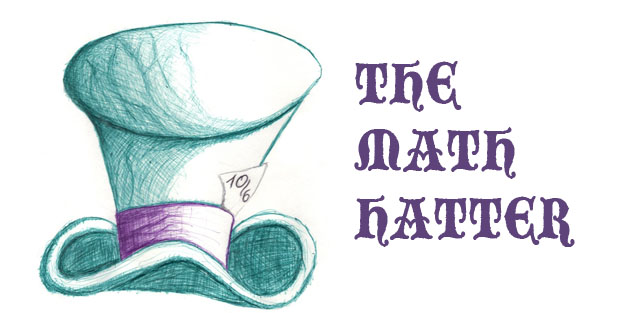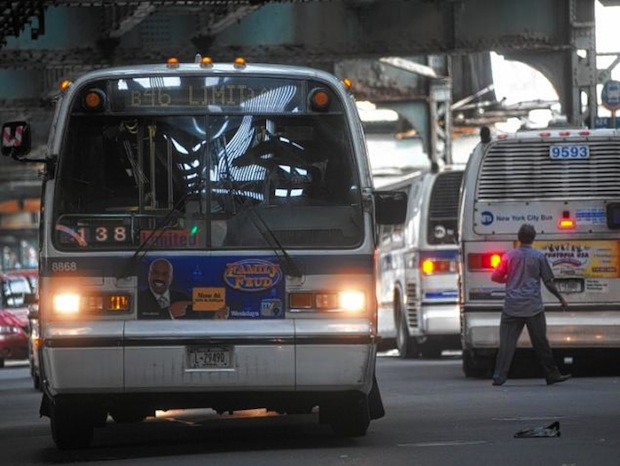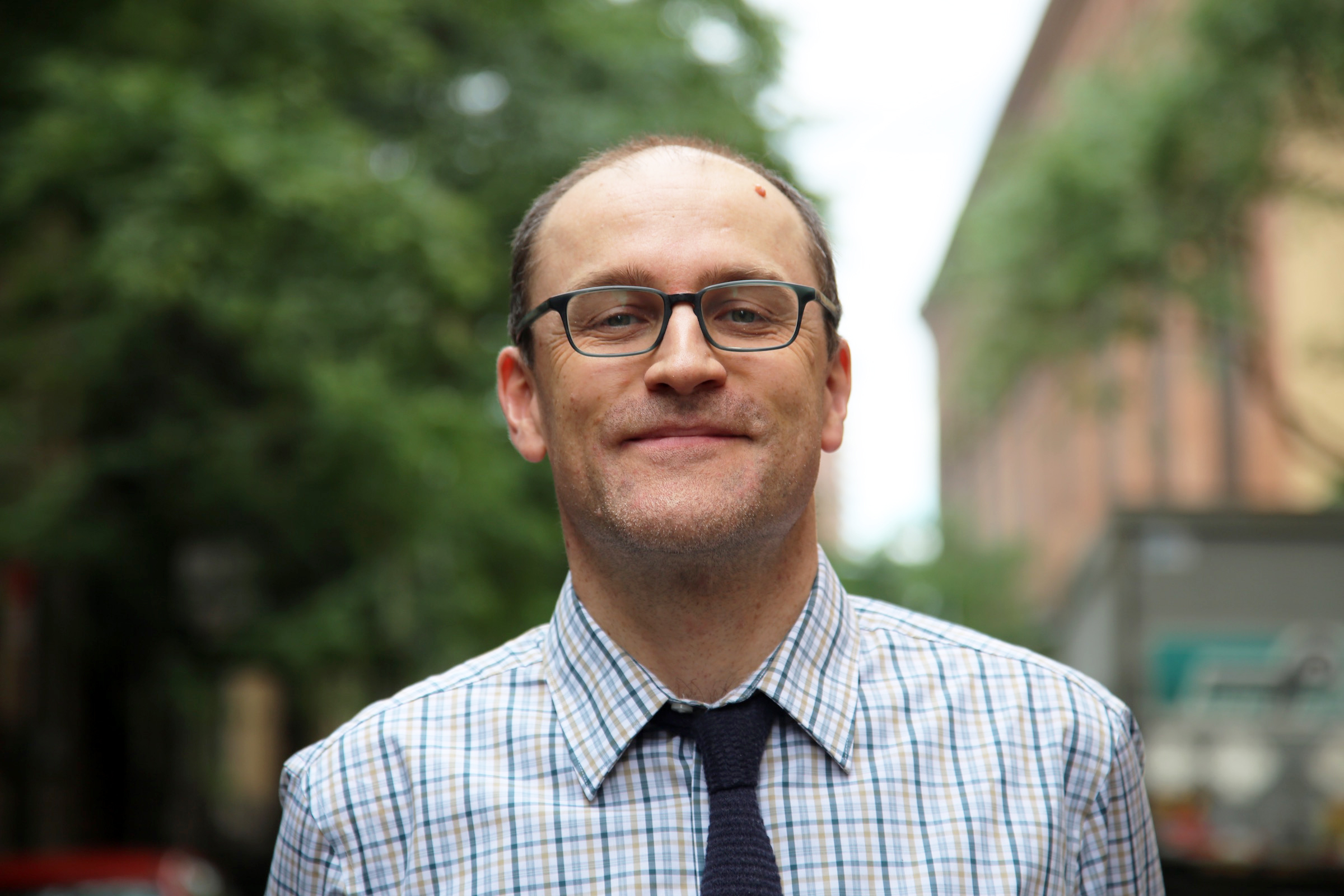Every morning I get off the A train at Columbus Circle and walk north to catch the crosstown bus at the corner of 65th street and Central Park West. That’s six blocks, easily covered in less than five minutes. To arrive at work between 8:00 and 8:10 am, I need to be at the bus by 7:45 at the latest, so timing is crucial. And of course, one of the problems with taking the bus is that you don’t want to just miss it. I’m sure it’s happened to you, walking to your bus stop and seeing it just taking off (the bus, not the bus stop). Sometimes you’re so close you swear the driver has seen you but doesn’t want to reopen the doors. This is very frustrating because you tell yourself you could have made it if you’d walked just a bit faster. But how could you know? You don’t want to strain yourself everyday with the chance of doing it uselessly. It’s a toss up because usually you can’t see the bus until it’s too late.
That said, here is what happened to me the other day. It’s a Monday, which means I am lucky to start at 9:05 am. I get off the A train and surface at about 8:10. I walk along Central Park West and as I am reaching 62nd or 63rd street, I see the bus crossing and entering the park. I don’t panick, I’m way ahead of time. I wait patiently at the bus stop. Five minutes pass. People start forming a line. Ten minutes, still no bus. Some people started to get nervous, checking their watches or fiddling with their phones. A woman with two young kids looks concerned. She goes into the middle of 65th street to try and see if something is wrong then walks back to Central Park West, apparently hesitating about getting into a cab.
This is ridiculous!
And then a bus comes. Everyone is relieved but as the bus approaches, we see the message “Not in service” in lieu of the destination. I sometimes wonder what those buses are for. Is it a driver returning to the base after their shift is over? Or a trainee learning a new route? Fifteen minutes. This is getting ridiculous. The woman with the two kids has become frantic. Still somehow, she can’t convince herself to take a cab. It is now past 8:30 and, if this continues, I may also arrive late to work.
At last, a few minutes before 8:35 one bus finally arrives, no wait…two buses. Well let’s make it three or, this is crazy, four buses show up at the same time! In the first one, of course, there is as much space to spare as in an Apple store on the launch day of a new iPhone. Everyone fits in the second bus and I make it on time for my 9:05 class.
So what happened? How could four buses arrive at the same time after none showed up for about twenty minutes? Or, as a book I’ve read a few years ago put it, “Why do buses come in Threes ?” (1). Well, as I will try to show here, the explanation can be quite simple. First let’s assume buses leave the depot at 5 minute intervals. This means that five buses leave in a twenty minutes period. Yes five buses, not four. It is actually a classic mistake in counting when one makes a confusion between the intervals and the boundaries of these intervals, between the middle and the half. As an example, two halftimes in a sports game are defined by three moments: the start, the half and the end. Or if you take a vacation from the 3rd of the month until the 20th, how many days are you off ? 17 ? as in 20 minus 3? No there are actually 18 days.
But back to buses. Suppose bus 1 leaves at 7:30, then bus 2 goes at 7:35, bus 3 at 7:40, bus 4 at 7:45 and bus 5 at 7:50. Between 7:30 and 7:50, five buses start their shift. Of course, because of traffic lights, streets blocked by taxis or other unpredictable events, it is impossible for those buses to maintain this 5 minutes interval all the way to the last stop. But these events should average out and one would expect only small differences in intervals between two buses. That wouldn’t account for a 20 minute long gap between buses, unless one considers a very particular event: rush hours.
More people means more stops and more delay
Imagine our bus number 1 arrives at the 68th and Lexington stop just before a crowded 4 train arrives from the Bronx at the subway station. Unless an MTA officer tells him to wait for the passengers, our bus is off to the next stop. Then what happens? People emerge from the subway and a fair amount of them line up waiting for our bus number 2, unaware they just missed bus 1. These people should be expected to wait about five minutes, the time it takes for the second bus to arrive at the stop. During these five minutes, chances are another train or two will arrive and more people will need to board our bus. When the bus finally arrives, maybe fifty people are lined up. It takes a while for all these people to board the bus and in the meantime our bus number 3 is catching up. If it was five minutes behind, and it takes three minutes for bus 2 to leave the stop then the interval is reduced to two minutes. And of course because bus 2 took most of the passengers, bus 3 won’t have as many waiting and will be able to leave faster. But there is another consequence.
Because bus 2 is full, there is a good chance that he has to make all the stops. More people in the bus means more people will ring the bell requesting a stop. And then, because the interval between bus 2 and bus 3 has been reduced, there is less time for new passengers to accumulate for the next bus. With this kind of snowball effect we shouldn’t be surprised to see bus 1 expanding his advance on bus 2 to fifteen minutes or more and buses 3, 4 or even 5 catching up on bus 2 to intervals of less than a minute. This thus explaining what happened to me the other day. The 20 minutes with five regularly spaced buses had become one bus, a 17 minute gap and then four buses in the last three minutes. Sure, four buses in a row might still be rare but two or three in a very short time window must happen frequently.
Next time, don’t scream at the driver!
One question remains with a possible unexpected answer: should I be happy when I just missed a bus ?
Well if we suppose there are equal chances to miss any of the first four buses in the example presented then I have 25% chance of missing the first bus and 75% chance of missing one of the next three. So the odds of having to wait just one minute against 17 minute are three times higher. Of course a 75% chance of waiting 1 minute and a 25% chance of waiting 17 minutes gives an average waiting time of 5 minutes, the normal interval between buses at the start. Furthermore, if I don’t see a bus just leaving when I arrive at a bus stop, there is a greater probability that I arrived in the large 17 minutes interval between bus 1 and bus 2 than in the short 1 minute interval between the following buses. So I should expect to wait a while, up to 15 minutes, if I’m unlucky, down to a couple of minutes if bus 1 passed a while ago.
So next time you just miss your bus, don’t bang on the door or scream at the driver! If the traffic is normal, you should expect to wait the regular five minutes and if it is not, then there is a big chance another bus is just following.
(1)”Why Do Buses Come in Threes ? The Hidden Mathematics of Everyday Life.” By Rob Eastaway and Jeremy Wyndham.
About the Author :
Originally from Brittany, David Soquet graduated from the Université de Rennes, before becoming a math teacher. After honing his skills at a middle school near Paris, he joined the Lycée Français in 2008. He is the father of two children and is passionate about the history of science. In his teaching, he tries to balance the rigor required by mathematics with humor and discovery. He is very curious and his interests range from modular origami and norse mythology to Fritz Lang’s cinema and music.



